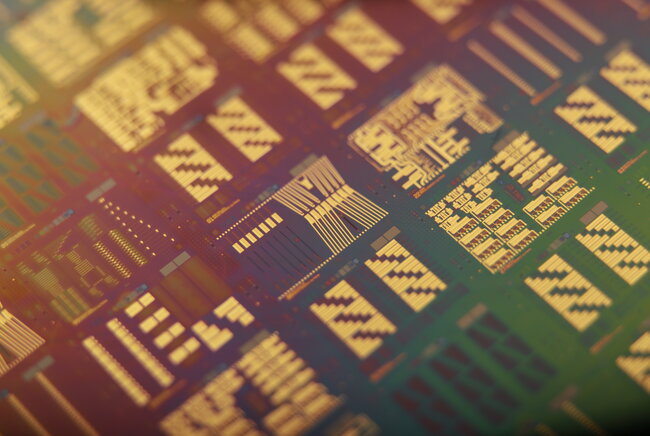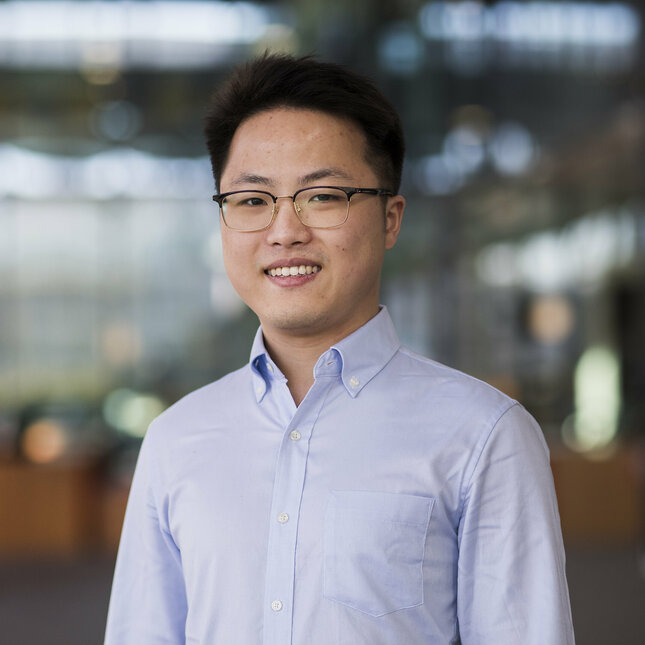Improving the active parts of photonic integrated circuits
For his PhD research, Yi Wang explored ways to improve the efficiency of power-hungry photonics parts.

Photonic integrated circuits (PICs) are tiny machines that transport information at the speed of light using photons. They are used in many aspects of modern society, from agri-food to healthcare and the Internet. In the next decade or so these circuits will be used in autonomous driving, artificial intelligence, quantum computing, and beyond. However, the path towards these applications is not a clear one, and a key issue relates to the efficiency of components that make up PICs. Recent PhD graduate Yi Wang has looked at ways to increase the efficiency of one of the most power-hungry components in PICs – so-called semiconductor optical amplifiers.
“We’re reaching a scaling bottleneck with photonic integrated circuits,” says Yi Wang. “And if we don’t solve this issue, advancements in photonic devices will be adversely affected.”
Nowadays, so-called very-large-scale integration photonic integrated circuits – or VLSI PICs for short – containing more than 100,000 components are being produced, but most of the components are passive rather than active.
Passive components – such as optical couplers, splitters, and modulators – direct light through a circuit. On the other hand, active components – like photodetectors, lasers, and amplifiers – can sense or produce light and offer so much more in terms of functionality.
“In an ideal world, you want a mix of passive and active components in PICs. If not, the ability to scale chips and include greater functionality and flexibility is quite limited. The scaling bottleneck is there because the active components don’t scale at the same pace as the passive ones,” says Wang.

Amplifying the stakes
To achieve the dream of active-passive VLSI PICs requires a focused effort on a single platform where the different components can be integrated together.
“Indium phosphide (InP) is a promising material when it comes to integrating together active and passive components on the same chip,” says Wang. “And in my PhD research, along with key collaborators at TU/e and from further afield, I explored various ways to enhance the performance of various active components.”
In one study recently published in the journal Optica, the young researcher considered ways to address the power inefficiency of semiconductor optical amplifiers (SOAs) – which amplify light.
“SOAs have not been used efficiently in the past. Often, some leftover charge carriers (otherwise electrical power) do not contribute to light amplification,” says Wang. “We figured out a way to harness these carriers by re-injecting the light into the gain section of the amplifier. This is a circuit-level way to boost the energy efficiency of the devices, and all without having to completely redesign the components.”
Wang and his colleagues used InP membrane on silicon (IMOS) technology to achieve full active-passive integration. Added to this, the amplifiers are developed without exotic materials which means that they can be mixed and combined conveniently in various ways to form complex circuits for diverse applications. “This can contribute to the paradigm shift towards true VLSI PICs in the near future,” says Wang.
LIDAR application
The efficiency improvement of the SOAs can lead to significant energy savings and help continue the required scaling of photonic chips in terms of the integration of active components with passive components.
“This type of technology would be useful for LiDAR (Light Detection and Ranging) applications, as well as in photonic computing devices which are very efficiency-sensitive,” says Wang.
In terms of the next logical step for the improved SOAs and other components from his research, Wang envisages various possibilities besides LiDAR and photonic computing. “We need to explore structural optimizations that could lead to even larger efficiency boosts. Since the double-pass SOA is a brand-new concept, the dual-mode nonlinear behavior also needs to be more deeply investigated, which will potentially lead to new device-level innovations.”
Further information
Check out the recent paper by Yi Wang and his collaborators in the journal Optica. Full details: ‘Efficency-boosted semiconductor optical amplifiers via mode-division multiplexing’, Yi Wang et al., Optica, (2023).
You can also read Yi Wang’s PhD thesis online. He defended his thesis at the Department of Electrical Engineering on September 14th. Full details: InP membrane photonics for large-scale integration. Supervisors: Meint Smit, Kevin Williams, and Yuqing Jiao.
Media contact
Latest news


